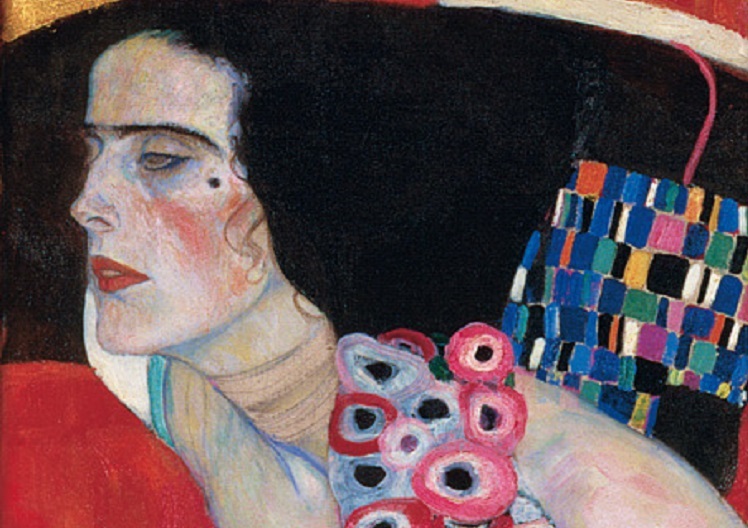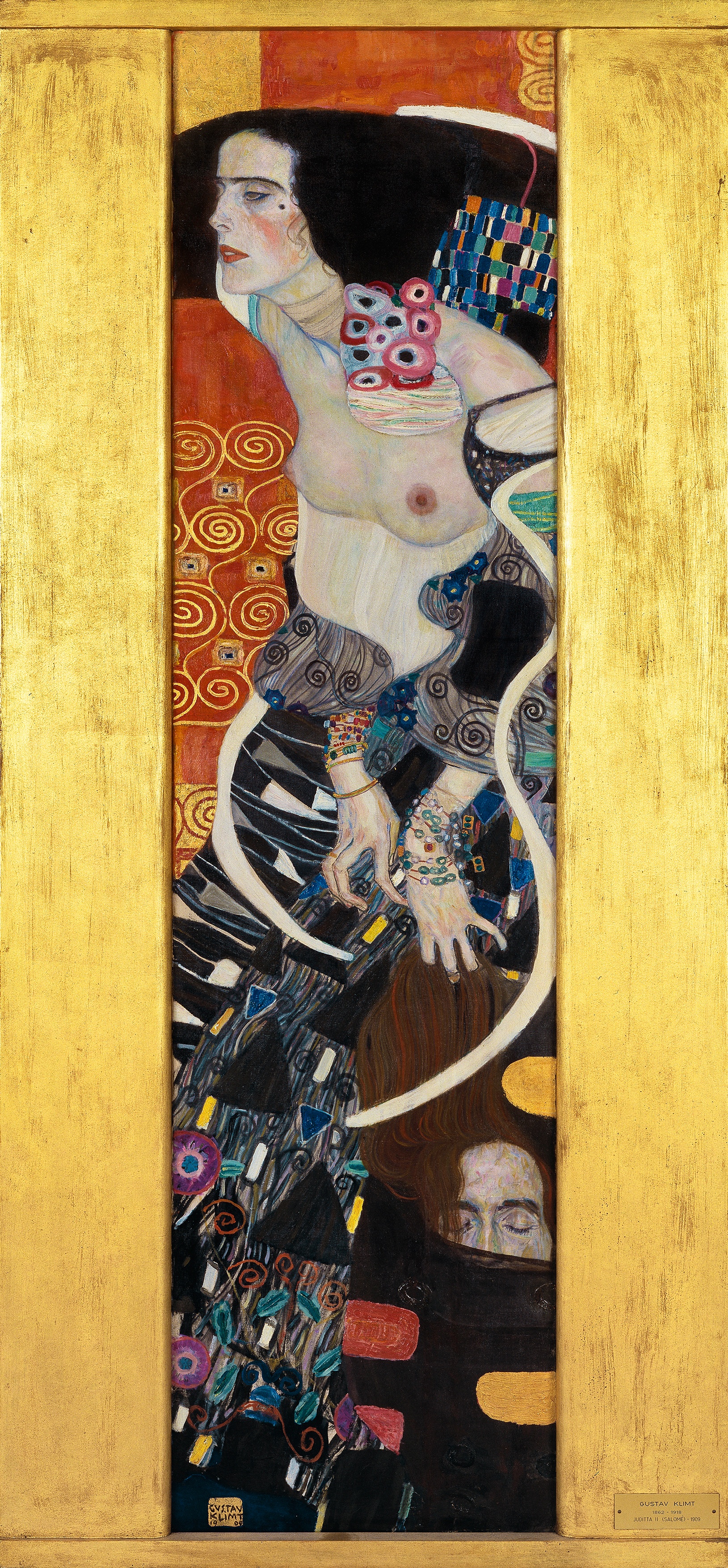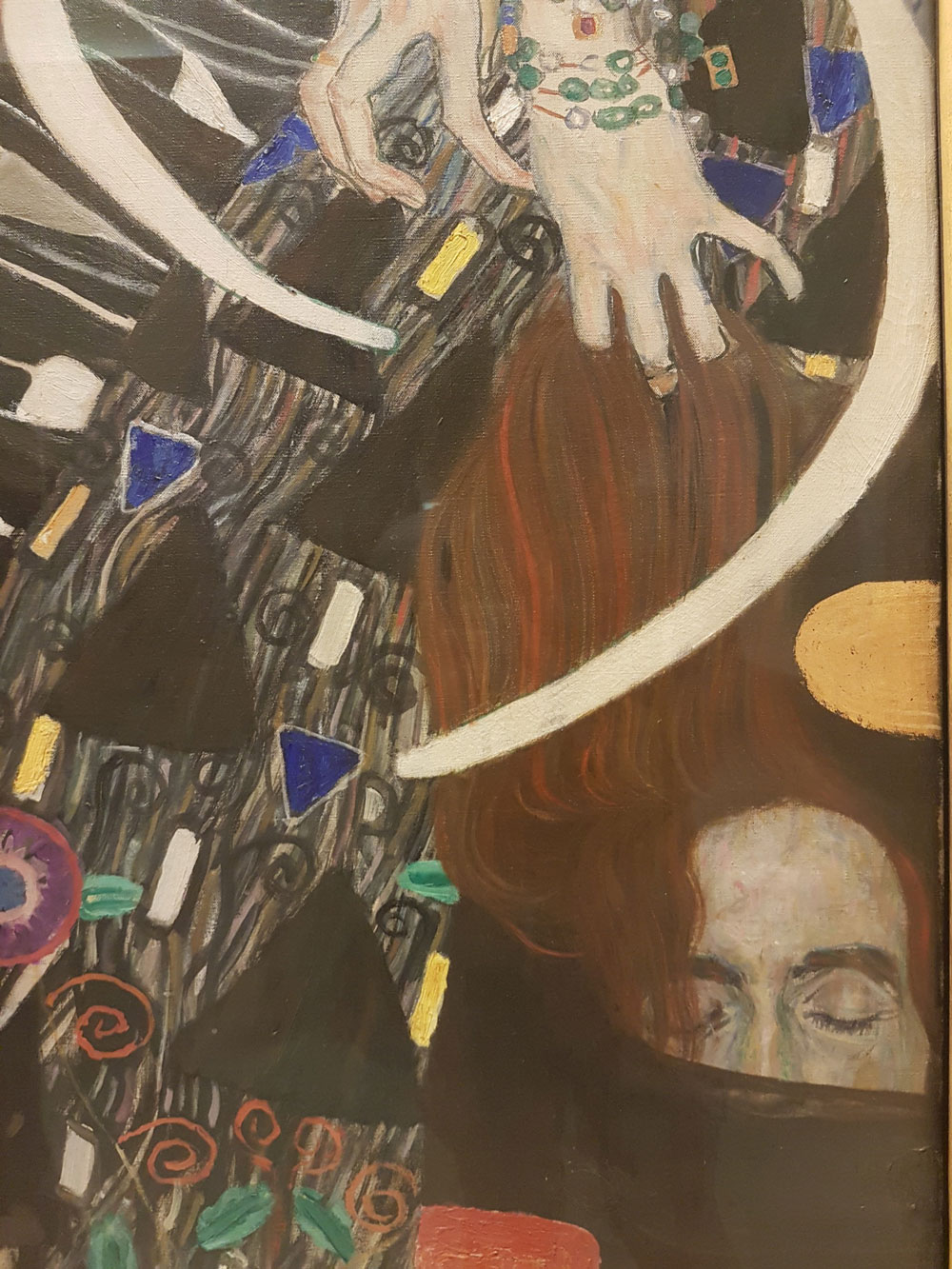Klimt’s Salome or Judith II: Description and Curiosities

Klimt’s Judith II, also known as Salome, is a work imbued with mystery and power.
Created in 1909, it is the second version of a subject Gustav Klimt had already tackled. This fascinating and provocative depiction of the biblical heroine mixes beauty and strength, emphasising the eternal appeal of the figure of Judith.
In this post, I will tell you the story of the work and the subject it represents, exploring the world of Klimt and the many interpretations that this work, which is now part of the collection of the International Gallery of Modern Art at Ca’ Pesaro in Venice, has aroused over the years.
Klimt’s Salome or Judith II

PRESENTATION OF KLIMT’S GIUDITTA II TO THE PUBLIC
Klimt had participated in the third Venice Art Biennale in 1899 with two works. On that occasion, however, he had gone unnoticed and therefore decided to reappear at the Biennale only much later: in 1910, on the occasion of the ninth edition of the famous exhibition.
In 1910 Klimt had his own room in Venice and the time was probably ripe for the public to appreciate the work of the artist, who did not adhere to any avant-garde movement but was renewing European figurative culture.
Klimt presented 22 works in Venice, including paintings such as the Three Ages, part of the collection of works in the National Gallery of Modern Art in Rome, The Poplar and even this Judith II.
The work was a great success and was purchased by the city of Venice to become part of the collection of works in the Venice International Gallery of Modern Art.
A decisively far-sighted decision that allows this work to be one of the most important masterpieces in today’s museum.
DESCRIPTION OF KLIMT’S GIUDITTA II
Klimt’s Judith II is a sensual, modern and tragic woman. She wears a dress decorated with arabesques and geometric decorations, typical of Secession taste.
Her breasts are bare and the expression on her face is hard and betrays a tension that even her hands communicate.
It is a painting that possesses the eroticism typical of Klimt’s Kiss, but seasoned with a disturbing tragicness.
Serving the hands themselves, we realise that one of them is holding a severed head and in this detail we realise what kind of tale Klimt is presenting to us.
Judith is the biblical heroine who beheads General Holofernes to save the city of Bethulia and prevent the invasion of Judea. She is therefore a woman who makes a courageous decision and risks everything. Her gesture will lead to the defeat of the Assyrians and the head of Holofernes, which she holds in her hand, is a representation not of the glory but of the drama of war.

KLIMT’S GIUDITTA II: ANALYSIS
Klimt had already tackled the same subject a few years earlier when he created the Judith, which is now exhibited at the Belvedere Gallery in Vienna.
In that first work, the artist began to use them extensively in fact it was made in 1901, the beginning of his ‘golden period’, one of the characteristics of Gustav Klimt’s life and art to be known.
The first Judith is also a sensual woman but is less tragic.The decapitated head of Holofernes only appears halfway and in the lower part of the painting.In reality almost nothing is noticeable because Judith takes the whole scene.
In the Judith, which is now exhibited in the Venice museum, however, the gold is much less present and the elongated format, with a frame consisting of two flat vertical bands, accentuates the tragic nature of the moment.
CURIOSITIES ABOUT KLIMT’S GIUDITTA II
Among Klimt’s works, Judith II is certainly the one that has been most misunderstood.
For many years, in fact, it was confused with Salome. The reason for this confusion is to be found in the success that the figure of Salome, the perpetrator of the murder of John the Baptist, had acquired by the end of the 19th century. however, Klimt is concerned with an entirely different woman.
Salome is a wicked woman who orders the murder of John the Baptist and does not carry it out herself. Judith, on the other hand, is a woman who makes a choice and carries it out herself, with her own hands. Judith is the author of her own destiny!
For his Judith, exhibited today in Venice, Klimt chose the oriental format of the ‘kakemono‘, underlining the importance of Japanism for much modern art.
It is a horizontal format and it is the frame, consisting of two very large vertical bands, that emphasises this particular dimension.
The frame of Klimt’s Judith II was made by the artist himself and painted completely in gold.
Follow me on:
About me
In this blog, I don't explain the history of art — I tell the stories that art itself tells.


